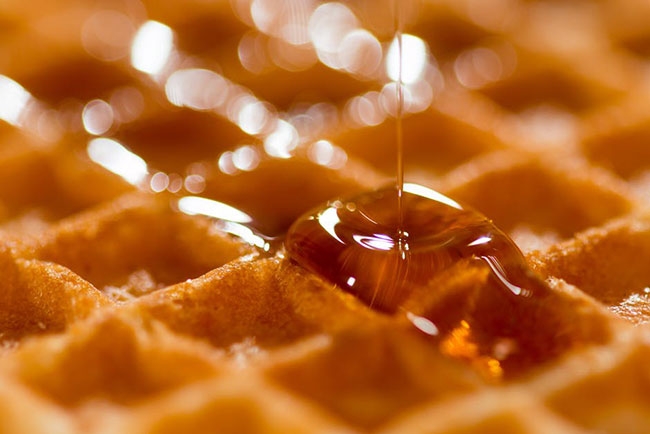
The Final Proof: The big buzz
August 16, 2017
By
Jane Dummer
Honey is a great natural sweetener: it’s clean label, environmentally friendly and brings desirable properties to the finished product.
 Honey is a natural preservative that adds moisture, colour and taste to baked goods.
Honey is a natural preservative that adds moisture, colour and taste to baked goods. As part of a general shift towards clean labels and natural ingredients, honey, nature’s sweet syrup, has caught the attention of the baking industry. Honey history is rich and deep. For years, honey has been used topically as an antiseptic. It’s believed to speed up the healing process in mild, superficial wounds, ulcers and burns. It’s hygroscopic, so it draws moisture out of environment and dehydrates bacteria. It also has a high viscosity which creates a protective barrier that can promote wound healing.
Honey consists of fructose (38 per cent), glucose (31 per cent), water and minerals such as iron, calcium, potassium and magnesium. Honey has been proven to be a healthier alternative to corn syrup due to its nutritional properties. With the high level of fructose, honey is sweeter than table sugar so you can use less. It caramelizes quicker than sugar and gives a darker finish to your bake.
Honey takes on the flavour of the flowers and terroir from the region it is produced in. Greg Hawkins, a veterinarian turned commercial beekeeper in rural Ontario explains.
“Consumers want high quality products in general and support a variety of categories produced by small, local businesses. For honey, consumers see ‘local’ as provincial or Canadian versus imported. The per capita consumption of honey in North America is about 1.5 kg per year. Even a small increase in that will provide great opportunities for local beekeepers who are creating high quality products. This could have a huge impact on local beekeepers.”
Hawkins describes the stewardship that is attracting consumers’ interest.
“In Canada, honey is gathered from generally undisturbed and natural environments, and goes from the hive to the bottle with no processing and relatively little travel and energy. This has a low environmental impact in production and in the case of honey; a definite stewardship of our environment that supports a local economy is taking place.”
Earlier this year, I had the opportunity to taste WOW! Factor Desserts’ new Honey Cake. The verdict – simply delicious. It is two layers of moist honey infused cake covered with cream cheese icing finished with a glistening honey butterscotch glaze dripping down the sides. The honey used in that cake is locally sourced from the Three Hills, Alta., which is only 2.5 hours by car from the head office. Debbie Gust, president, talked about the benefits.
“Honey has many uses in the bakery. It is a natural preservative, plus it adds moisture, colour, great flavour and shelf life to desserts that are not easily achieved with other natural sweeteners. Using a liquid sugar as opposed to a granulated sugar means the sugar crystals are already dissolved leading to a more consistent product because there is no need to cream the sugar with a fat to dissolve the crystals and the product will brown faster.”
Gust cautions bakeries about honey being naturally acidic which means you may need to increase the amount of baking soda used in the baked good to allow the dessert to rise properly. Gust is very optimistic about the future of local honey in the Canadian baking industry; it’s the ultimate natural way to improve the quality of a dessert!
Kimberley City Bakery has over two dozen products on their regular daily menu that have honey in the recipe. And more items in the late summer to mid-fall when local honey is plentiful. Eric Forbes, owner and baker says, “our lavender honey Fritssant is our most popular honey product. It’s based on the ever popular cronut by Dominque Ansel but made with our very popular croissant dough, laminated, and deep-fried. Our lavender honey is made in house, sourcing lavender from the Aix-en-Provence region, while our honey is locally sourced from British Columbia.”
Kimberley City Bakery uses both flavoured and unflavoured raw honeys. Forbes explains: “In our area, wild flower honey is the flavour of our bees which is the honey we source in the warmer temperatures.”
Forbes believes honey has a great future in baking.
“With a trend to eat healthy and more awareness of where ingredients are sourced, I believe what is old is new again and people continue to make educated choices for the future by knowing what goes into their food including locally sourced honey.”
Jane Dummer, RD (www.janedummer.com), known as the Pod to Plate Food Consultant, collaborates and partners with the food and nutrition industry across North America.
Print this page
Leave a Reply